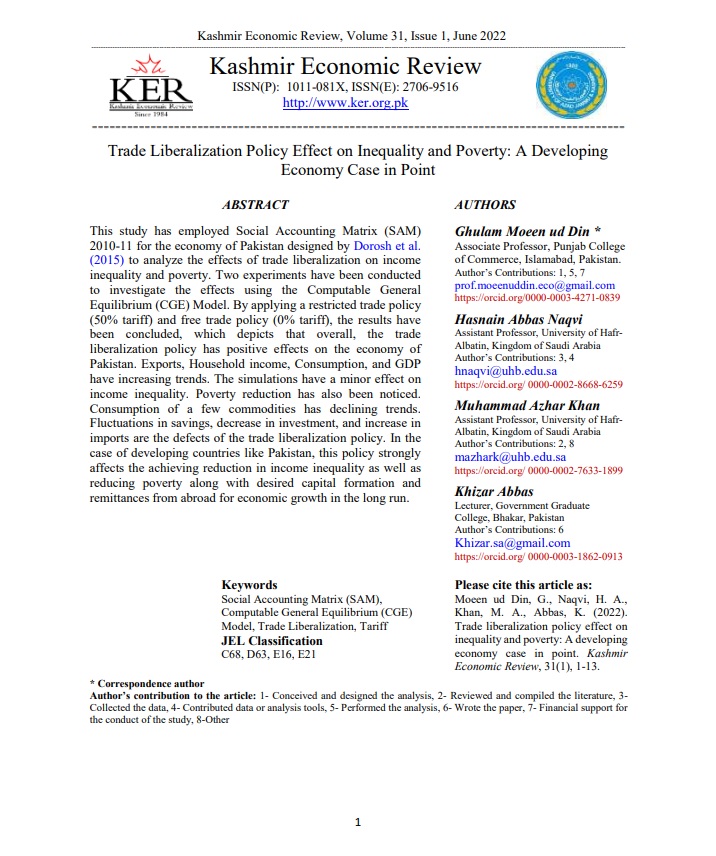Trade Liberalization Policy Effect on Inequality and Poverty: A Developing Economy Case in Point
Main Article Content
Abstract
This study has employed Social Accounting Matrix (SAM)
2010-11 for the economy of Pakistan designed by Dorosh et al.
(2015) to analyze the effects of trade liberalization on income
inequality and poverty. Two experiments have been conducted
to investigate the effects using the Computable General
Equilibrium (CGE) Model. By applying a restricted trade policy
(50% tariff) and free trade policy (0% tariff), the results have
been concluded, which depicts that overall, the trade
liberalization policy has positive effects on the economy of
Pakistan. Exports, Household income, Consumption, and GDP
have increasing trends. The simulations have a minor effect on
income inequality. Poverty reduction has also been noticed.
Consumption of a few commodities has declining trends.
Fluctuations in savings, decrease in investment, and increase in
imports are the defects of the trade liberalization policy. In the
case of developing countries like Pakistan, this policy strongly
affects the achieving reduction in income inequality as well as
reducing poverty along with desired capital formation and
remittances from abroad for economic growth in the long run.
Article Details

This work is licensed under a Creative Commons Attribution-ShareAlike 4.0 International License.

